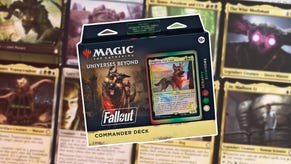Hammerwatch is Gauntlet for the Modern Generation
Been a-hankerin' for some cooperative top-down monster-slayin' action? This new indie gem's got you covered.
This article first appeared on USgamer, a partner publication of VG247. Some content, such as this article, has been migrated to VG247 for posterity after USgamer's closure - but it has not been edited or further vetted by the VG247 team.
I'm immensely fond of the old Gauntlet games -- several of my friends and I still greet each other by drawling "Welcome! Red Wizard!" at one another -- but I'm also painfully aware that, in a number of respects, they don't hold up as well as they perhaps could from a modern perspective.
All the ingredients for a good experience are there -- cooperative play for up to four players with noticeably different character classes, challenging enemies, tricky mazes to escape -- but the game's roots as an arcade machine unfortunately get in the way of the fun at times. The constantly ticking health timer that became all but irrelevant in home ports because you could simply top it up at any time; the fact that it was far too easy for other players to get "stuck" on different parts of the screen because someone had scrolled it in the wrong direction; the fact that nearly half of the screen was taken up by static artwork and status readouts -- all of these things conspire to, today, make playing an elderly Gauntlet game more of a chore than it perhaps should be. (Don't even get me started on the Atari Lynx version, whose game length was longer than its host system's battery life and didn't have a save facility.)
Modern action RPG dungeon crawlers such as the Diablo and Torchlight series are often compared favorably to the Gauntlet games of yore, but they're not quite the same thing; while they're fast-paced and fun, they still don't have the immediacy of Gauntlet, and often demand players take a bit more care over their character "builds" as they progress. This was somewhat mitigated by Diablo III's hot-swappable skills, but that then creates a whole other set of things for people to complain about, for no-one knows better than Blizzard that it is impossible to please everyone.
Indie roguelikes also often have a fair amount in common with Gauntlet, particularly in an aesthetic sense, but these often don't have the multiplayer cooperative angle, or take a more sedate, thoughtful pace thanks to being turn-based. That's not to say there's anything wrong with them -- they just don't capture that feeling of taking on hordes of enemies with friends that Atari's classic did.
Enter Hammerwatch, a recent graduate from Steam's Greenlight program, and a new release on Valve's digital distribution portal. Hammerwatch is the work of an outfit called Crackshell, also known as Jochum Skoglund and Niklas Myrberg. It's also the closest thing we're probably going to get to a new Gauntlet game in 2013 -- and successfully manages to blend retro sensibilities with more modern ideas.
In Hammerwatch, you take on the role of one of four different character classes, each of whom has their own special abilities, strengths and weaknesses. You'll start in the prisons beneath the titular castle and gradually work your way up to the top, though unlike Gauntlet you can freely move back and forth between floors and will occasionally be required to in order to access various secret places and hidden treasures.
Unlike other similar games, Hammerwatch resists the temptation to make use of an experience-based progression system, instead simply allowing players to purchase upgrades with treasures they've found around the dungeons. There's a tricky twist on this, though -- in order to upgrade your abilities, you need to actually find the trainers who are able to sell you these enhancements, and they're often situated in the most awkward places possible, requiring a bit of lateral thinking and, in several cases, moving back and forth between levels in order to reach them. In a pleasing twist to old-school games, very often you can see these characters on the map screen well before you're actually able to reach them, giving you something seemingly unattainable to aim for, and delivering an intense burst of satisfaction when you finally manage to reach them.
This feeling of satisfaction extends throughout the game. It's filled with little moments of gratification that make you feel good as you play -- and playing alongside up to three friends online, via local area network or via couch co-op makes the experience all the more fun -- though expect to be yelling at each other about "stealing all the treasure" within minutes of starting if your friends are anything like mine.
It's also worth noting that the game's old-school nature extends to the fact that you can and probably will see a "Game Over" screen at some point. This isn't a game in which you nurture one character for hundreds of hours, building them up into an unstoppable powerhouse; it's a game in which you start from the beginning each time and try to get as far as you can with your initial allotment of lives, increasing in skill each time you play. Those who are used to save states, checkpoints and persistent progression may well find this jarring at first, but anyone who grew up with old-school computer, console and arcade games will be well familiar with this style of play -- not to mention the inherent satisfaction and excitement that comes in getting further than you've ever managed before.
Oh, and for true retro junkies, some rather fabulous post-processing filters allow you to make the game look like it's being placed on an old, curved-screen CRT monitor if you really want to. The effect is wonderfully realistic.
If all that's enough to convince you to give Hammerwatch a shot, it's currently available for 10% off its usual price on Steam; those of you who remain unconvinced can try out an early beta version of the first part of the game via the official website.









